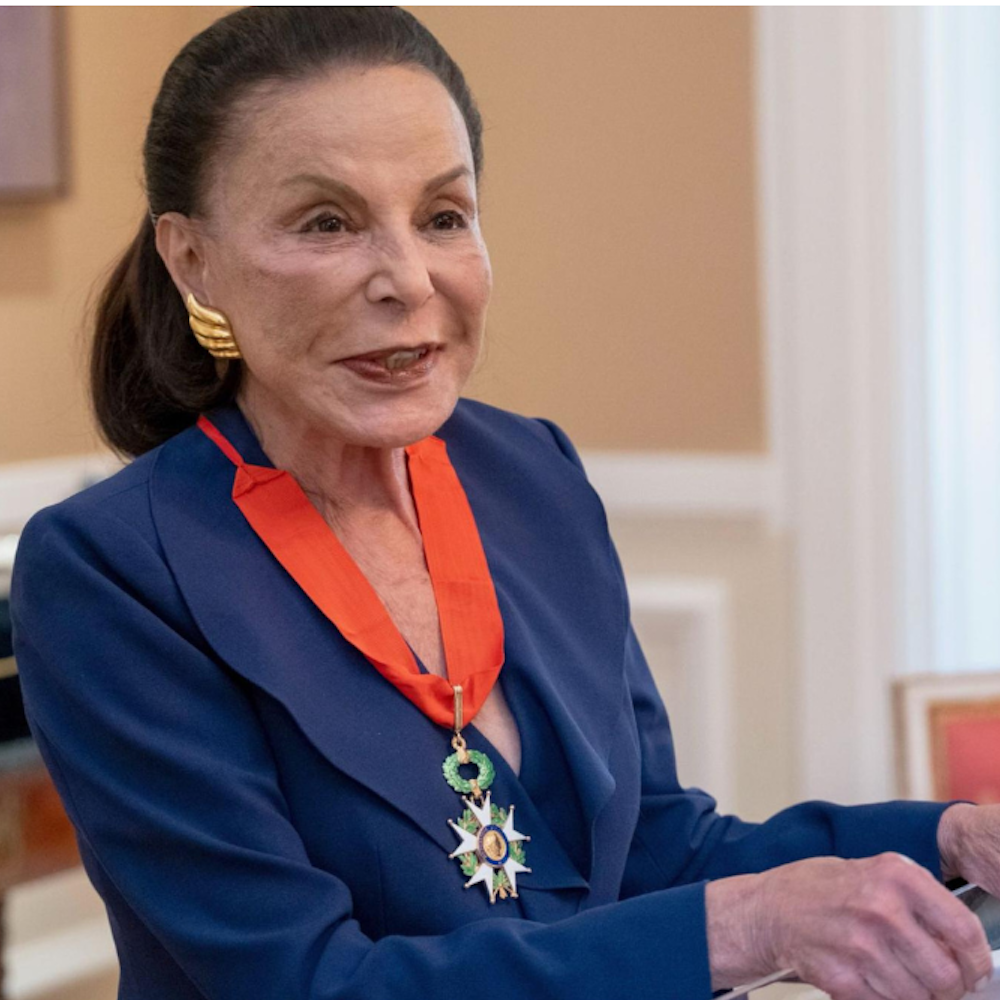Long before her son, Antony Blinken, became Secretary of State, Judith Pisar was conducting her own special form of diplomacy: Cultural diplomacy. In fact, she was once described by architect Philip Johnson as “America’s Cultural Czarina in Europe.”
Her life, and that of her late husband – international lawyer, writer and Auschwitz survivor Samuel Pisar – has been a vibrant and glamorous tale of two continents. Starting in the 1970s, their Parisian home, which sits in what was once the garden of French composer Claude Debussy, with its grand piano and abstract expressionist art, has been a melting pot of American and European culture and intellect, with music ever-present, and itinerant pianists, violinists or cellists coming over to practice.
Their dinner parties have been the stuff of improbable encounters: John Cage and Grace Kelly (who lived next door); Hubert de Givenchy and Arthur Rubinstein (who also lived next door); Leonard Bernstein and Henry Kissinger; not to mention Leo Castelli, James Baldwin or Yevgeni Kissin.
When this native New Yorker was starting out, she shared an office in midtown Manhattan with her friend Susan Wadsworth. Pisar was launching a speakers’ bureau for composers; Wadsworth was launching an incubator for young musicians called Young Concert Artists. More than 60 years later, YCA is one of the most important forces in the discovery of classical music talent.
This year’s gala honored Pisar’s longtime friend Clive Gillinson, the executive and artistic director of Carnegie Hall.
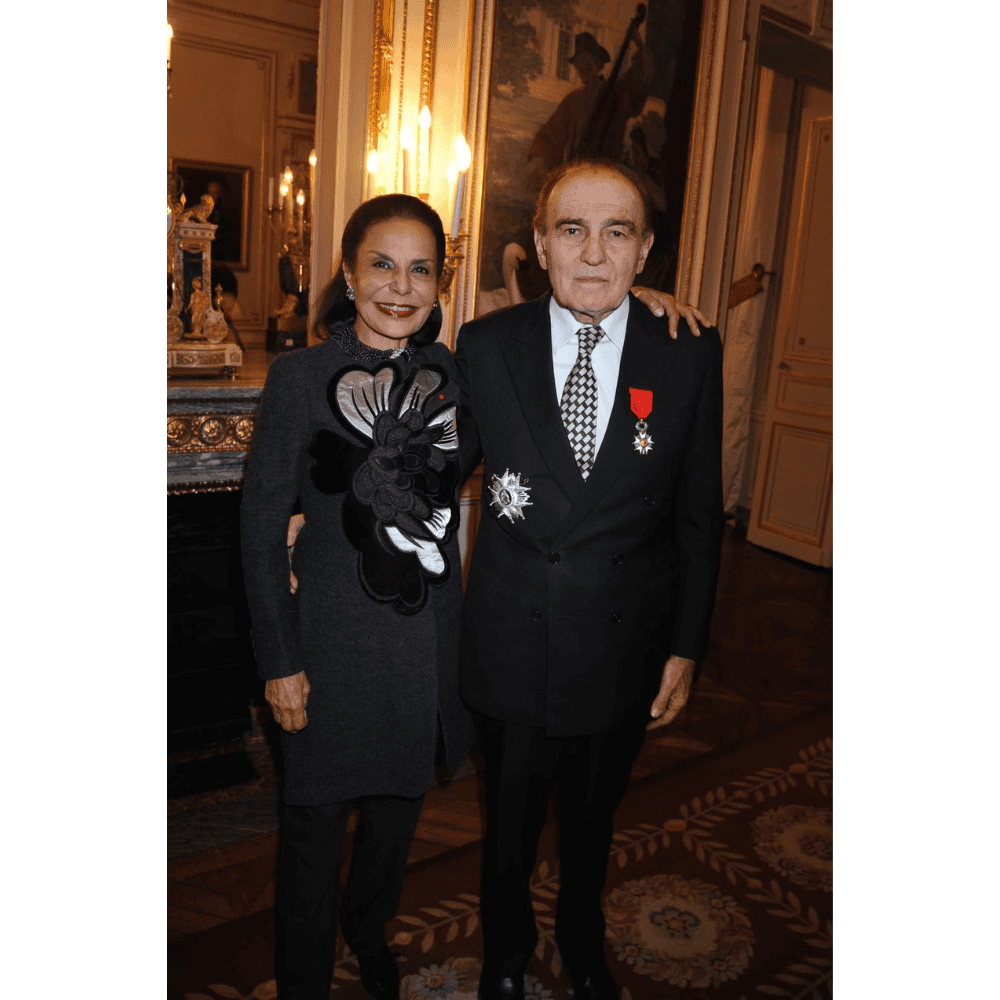
(courtesy)
The gala featured performances from pianist Emanuel Ax, the honorary chair, alongside cellists James Baik, Colin Carr and Julia Bruskin, among others, including musicians from the National Youth Orchestra of the USA.
In 2017, Pisar was named UNESCO Special Envoy for Cultural Diplomacy for her pioneering work in cultural exchange and international dialogue. When asked where this passion comes from, she responds: “It has always been there. It started with a love of music, as a teenager. I would sneak into rehearsals at Carnegie Hall, and this is how I met Leonard Bernstein and many others – even Igor Stravinsky and Alma Mahler.”
In her 20s, she grew close to a more cutting-edge crowd, like John Cage, Nam June Paik, Iannis Xenakis and also Mark Rothko, Jasper Johns and Hans Hoffmann. Through Cage, she met Merce Cunningham, and went on to direct his Dance Company, organizing their international tours, and was eventually named Director of Music at the Brooklyn Academy, by Harvey Lichtenstein.
She then married Samuel Pisar and moved to Paris. There she discovered a vibrant art scene and a new universe of style, from design to couture. She took the helm of the American Center on boulevard Raspail, and turned it into the meeting place for cultural trailblazers – Samuel Beckett, Peter Brook, Philip Glass, Robert Wilson and also Gene Kelly, Quincy Jones and Michel Legrand.
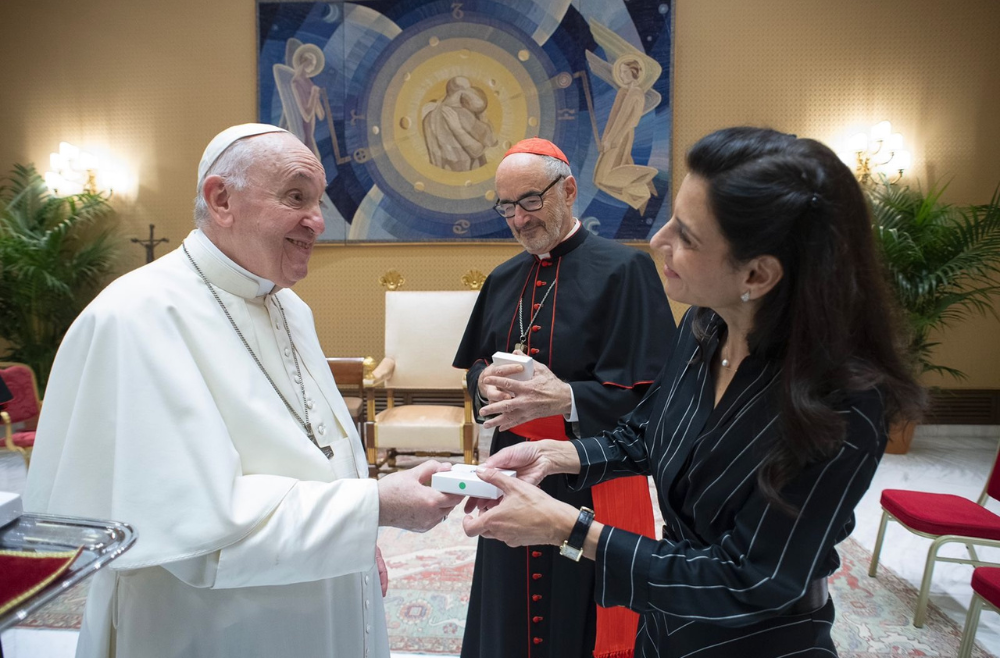
(courtesy)
“The American Center was the place where you would find French and American artists exchanging ideas and working together,” said Pisar. In the late 1980s, when they felt they had outgrown their space, she asked Frank Gehry to design a new building, one of his first in Europe, on the banks of the Seine in Eastern Paris.
“My mother was always culturally involved starting in the 1960s, at the forefront of art, dance, fashion and classical music,” said her daughter Leah Pisar. “When she married my father and took my brother, who was about 9 years old, to live with them in Paris, she thought, let’s try it for a year and then we can go back to New York. But before she knew it, she had become a Parisian.”
“Culture was a new language,” said Judith Pisar, who recalls the time when women couldn’t even wear pants to work. “It was a trailblazing generation, things we take for granted today.”
Fashion couturiers were competing to dress Pisar, who developed a close friendship with Sonia Rykiel, an icon among Parisian artists and intellectuals. She favored Rykiel’s low key style for her active daily life, and Hubert de Givenchy for his legendary evening glamor.
She recalls Givenchy as “one of the most elegant men I had ever seen,” and met him through a mutual friend, an architect, soon after arriving in Paris. “He would lend me the models’ prototypes. I felt like Cinderella when I would go to his salon, borrow the most extraordinary gown… and return it the next morning.”
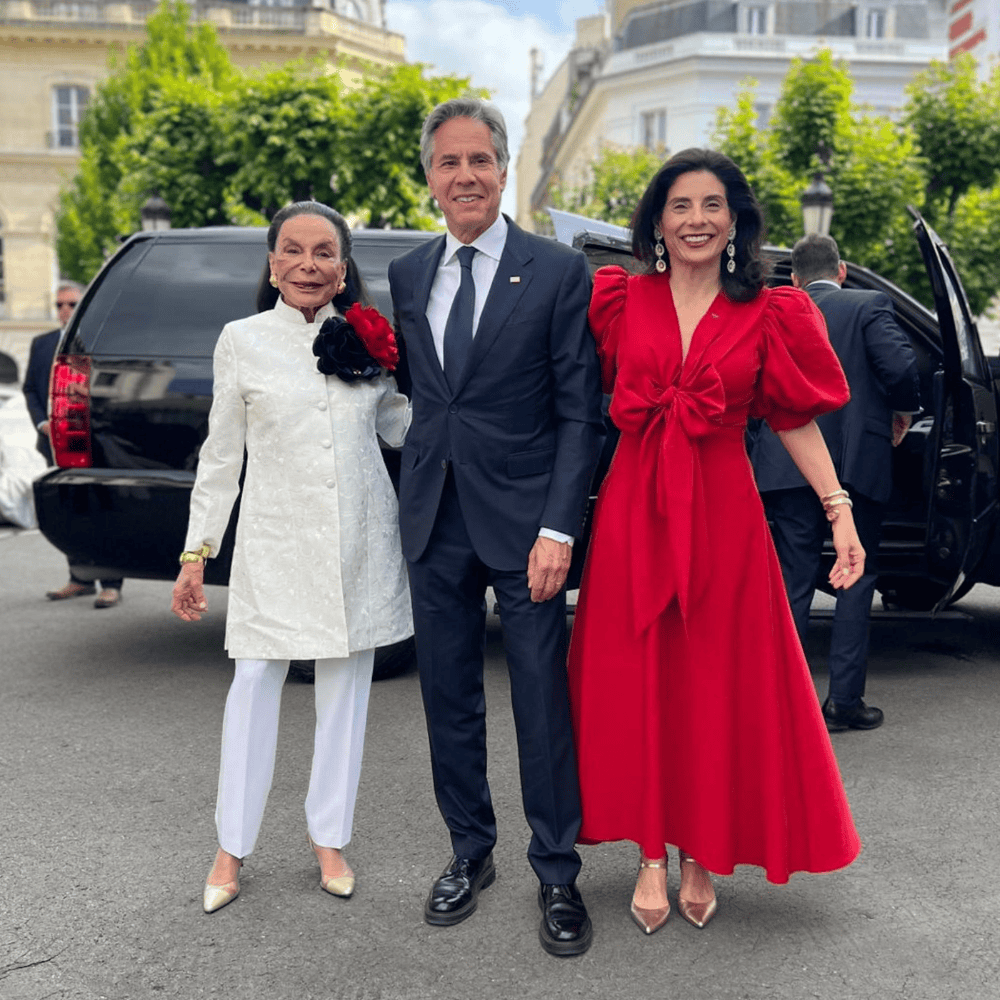
(courtesy)
In the mid-1980s, the intrepid French Minister of Culture, Jack Lang, decided to highlight the place of sartorial creativity in the field of culture. Adamant that couture, especially French couture, is a great art form, he launched an award ceremony – Les Oscars de la Mode (the Fashion Oscars). While Givenchy naturally took Audrey Hepburn as his muse, Rykiel asked Judith Pisar, dressing her in a hip black and white crushed velvet dress that was “so chic and so comfortable, that I could relax and feel like myself.” She adds, with a smile: “We won an Oscar that night.”
She also recalls working with famed photographer Helmut Newton. “Helmut was amazing. He would team up with our students to hang his photos,” said Pisar. “The crowd we got at the American Center for his exhibition was enormous, a combination of cultural influencers, intellectuals, fashion models and curious viewers.”
After leaving the American Center, feeling it was time for new leadership once the Gehry building had opened and the square in front of it had been named Place Leonard Bernstein by then mayor of Paris, Jacques Chirac, she founded Arts- France USA, which has been singularly focused on bringing the best of American music to France, paying tribute to the likes of Bernstein, Gershwin, Duke Ellington and Louis Armstrong.
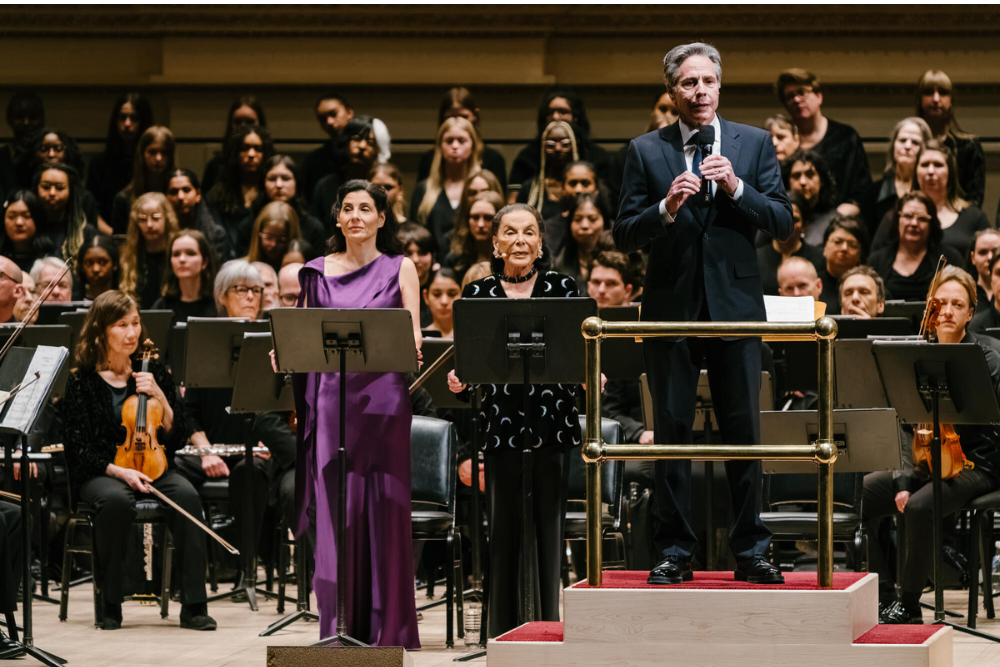
(courtesy)
In 2021, she launched the Pisar Prize, which sponsors young composers to travel to the United States or France, and write an original piece inspired by their journey. Created in memory of her mentors John Cage and Merce Cunningham, it is presented in Partnership with The Juilliard School, the Théâtre des Champs- Elysées and Villa Albertine.
While most of her career has been behind the scenes as a cultural éminence grise, she has recently taken to the stage herself. In January, at Carnegie Hall, she and her daughter Leah narrated the libretto written by Samuel Pisar for Leonard Bernstein’s Symphony No. 3, Kaddish. With the orchestra of St Luke’s under the baton of James Conlon, the concert commemorated the 80 th anniversary of the liberation of Auschwitz.
“The Kaddish is the Hebrew prayer for the dead, but does not speak about death. It is sung by the chorus, while a narrator recites something completely different. This powerful symphony, for full orchestra, two choirs, soprano and narrator, is about a complicated exchange with the Almighty. My husband was asked by Bernstein to write his own text, in 1990, months before Bernstein died.”
As she recalls, after quizzing him about his time in Auschwitz and Dachau, Bernstein told her husband: “You have endured the most tragic chapter of our history. You must write a new narrative rooted in your suffering and resurrection.”
At first, Pisar felt he could not write something worthy of Bernstein’s music. But a decade later, after the 9/11 attacks, he began to work on A Dialogue with God. “Sam wrote a magnificent text and ended up narrating it 30 times with major symphonies across the world.” Since his death in 2015, she and her daughter have been performing it, sharing the text. Starting in Milan and in Tokyo’s Suntory Hall, they have presented it roughly a dozen times since then.
Reflecting on the importance of music, and culture, on the international scene, she pauses for a moment: “It hasn’t been as simple as one might think, because the transatlantic relationship has experienced some ups and downs over the years. But art is the ultimate common language and, for me, a very great way to foster exchange and dialogue, particularly in challenging times.”
Presented by: APG.

